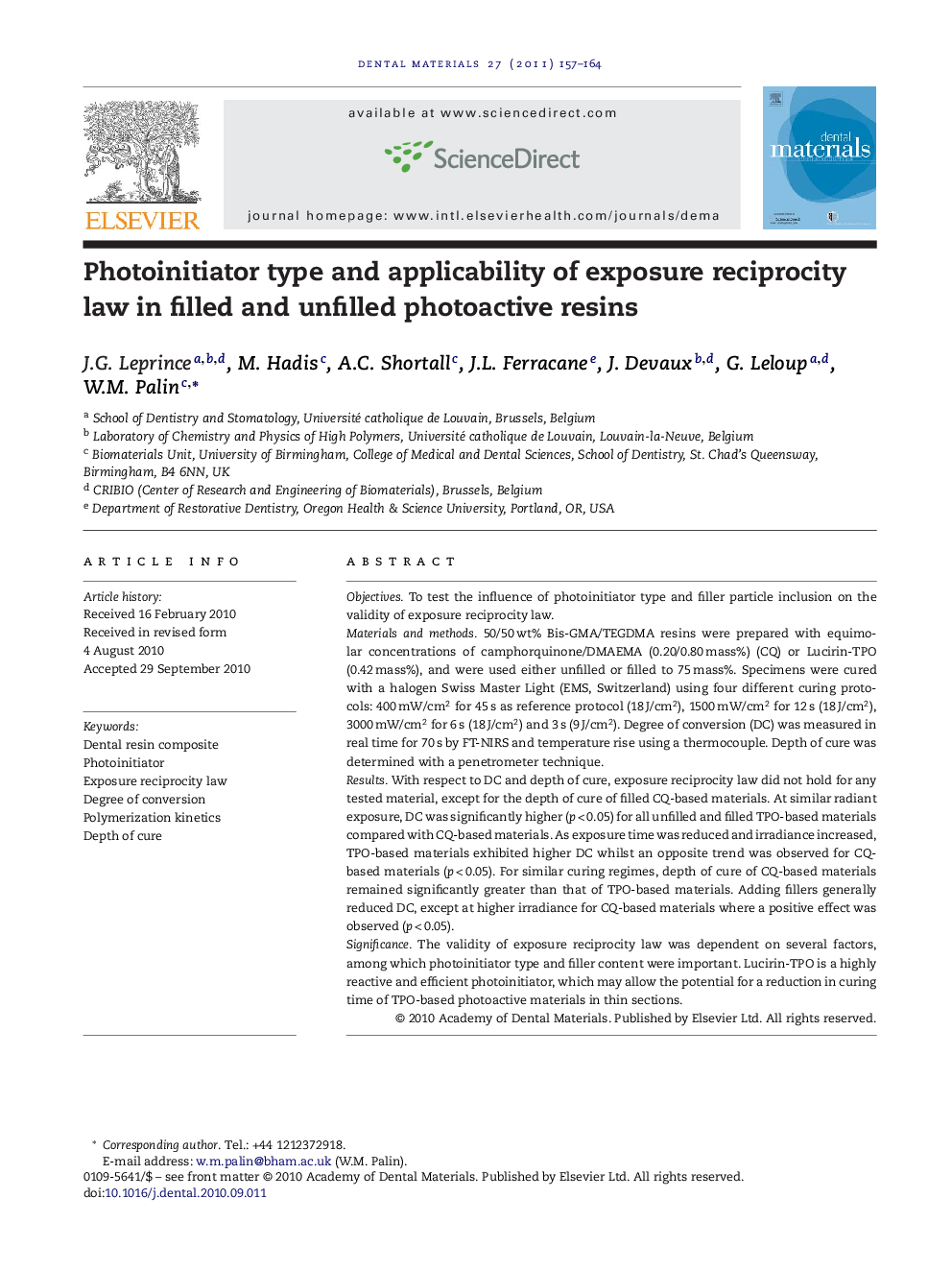| کد مقاله | کد نشریه | سال انتشار | مقاله انگلیسی | نسخه تمام متن |
|---|---|---|---|---|
| 1421300 | 986404 | 2011 | 8 صفحه PDF | دانلود رایگان |

ObjectivesTo test the influence of photoinitiator type and filler particle inclusion on the validity of exposure reciprocity law.Materials and methods50/50 wt% Bis-GMA/TEGDMA resins were prepared with equimolar concentrations of camphorquinone/DMAEMA (0.20/0.80 mass%) (CQ) or Lucirin-TPO (0.42 mass%), and were used either unfilled or filled to 75 mass%. Specimens were cured with a halogen Swiss Master Light (EMS, Switzerland) using four different curing protocols: 400 mW/cm2 for 45 s as reference protocol (18 J/cm2), 1500 mW/cm2 for 12 s (18 J/cm2), 3000 mW/cm2 for 6 s (18 J/cm2) and 3 s (9 J/cm2). Degree of conversion (DC) was measured in real time for 70 s by FT-NIRS and temperature rise using a thermocouple. Depth of cure was determined with a penetrometer technique.ResultsWith respect to DC and depth of cure, exposure reciprocity law did not hold for any tested material, except for the depth of cure of filled CQ-based materials. At similar radiant exposure, DC was significantly higher (p < 0.05) for all unfilled and filled TPO-based materials compared with CQ-based materials. As exposure time was reduced and irradiance increased, TPO-based materials exhibited higher DC whilst an opposite trend was observed for CQ-based materials (p < 0.05). For similar curing regimes, depth of cure of CQ-based materials remained significantly greater than that of TPO-based materials. Adding fillers generally reduced DC, except at higher irradiance for CQ-based materials where a positive effect was observed (p < 0.05).SignificanceThe validity of exposure reciprocity law was dependent on several factors, among which photoinitiator type and filler content were important. Lucirin-TPO is a highly reactive and efficient photoinitiator, which may allow the potential for a reduction in curing time of TPO-based photoactive materials in thin sections.
Journal: Dental Materials - Volume 27, Issue 2, February 2011, Pages 157–164